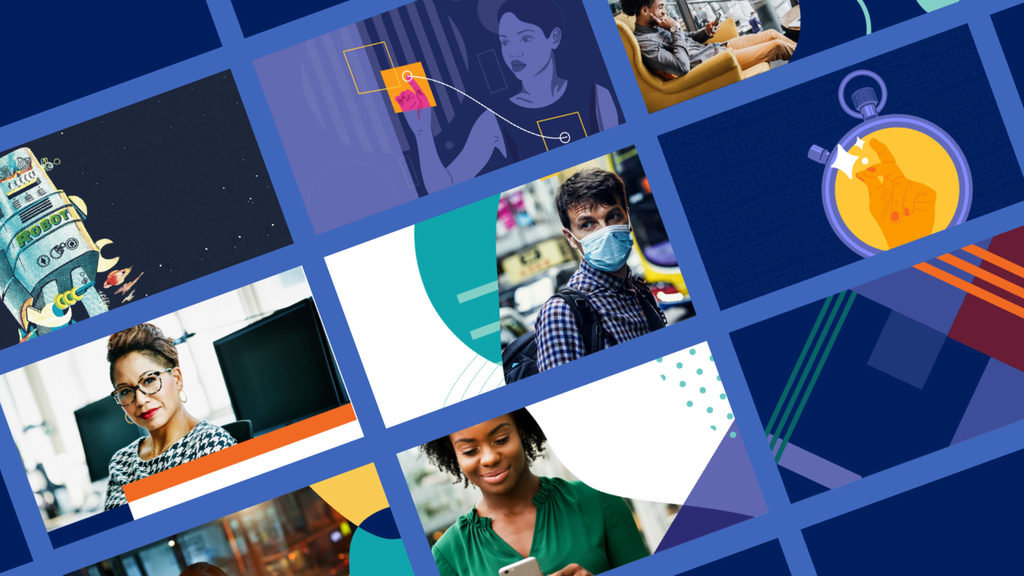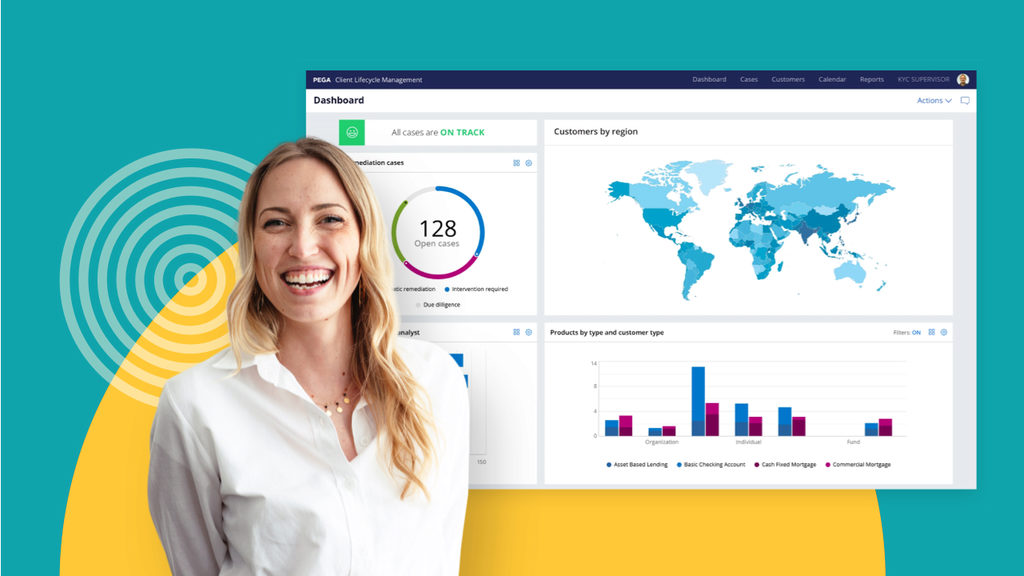Video
Aflac keynote at PegaWorld iNspire 2023: Aflac's Journey: Unleashing the Power of Pega AI & Automation
Roadblocks, bottlenecks, staffing fluctuations, market pressures. Operating smoothly and efficiently is more challenging than ever – almost as challenging as balancing critical business needs with budgetary realities. It all adds up to frustrated employees and customers. But Aflac, a leading provider of supplemental health insurance in the U.S., and Aflac Life Insurance Japan, the leading provider of medical and cancer insurance in Japan, found the solution: using Pega’s agile, low-code platform and innovative customer service capabilities to continually deliver transformational outcomes. Hear directly from Aflac’s CIO, Shelia Anderson, about how they’ve created an innovation pipeline that overcomes roadblocks and allows their employees to deliver exceptional service to their customers.
Transcript:
I am so excited to be here, to welcome you to PegaWorld. I'm basically responsible for overseeing Aflac's digital services organization, and for driving our technology strategy in support of the company's US business.
We're a well-known company, but sometimes not known well. You may know us best by the Aflac Duck, which for more than 20 years has been our international brand icon. Aflac was actually founded in 1955 as a cancer insurance company. And today we're actually a $26 billion company, and a leader in supplemental health insurance. We operate out of both the US and Japan, covering millions of customers.
Aflac actually specializes in supplemental benefits, so you may ask what is that? Think of it as accident, cancer, critical illness, hospitalization, short-term disability, and life insurance. We also have group coverage with dental, vision, life, disability, and absent services. We provide value to our policyholders by basically helping them to bridge the gap for unexpected costs that medical insurance may not cover.
Our products basically provide peace of mind, knowing that Aflac is there in the time of need. This gives our policyholders the opportunity to focus on perhaps recovery, instead of that added financial stress that often comes. Our focus is on making their experience with Aflac engaging, and as stress-free as possible.
Kerim talked about all of the advances in AI and automation, the way that organizations work and connect with customers. And like many organizations, especially in the insurance industry, we too were challenged with numerous homegrown legacy applications and many, many manual processes that many businesses are still challenged with.
What did this do? It actually slowed down our ability to respond to our customers and policyholders, and actually prevented us from delivering that very valued stress-free experience that we were striving for. So, we established a goal to actually transition to a much more customer-centric business architecture.
Our goal was to achieve a more robust, 360-degree view of each of our customers, and also to be able to take advantage of all of this new digital and AI-based technologies that you're all hearing about. We wanted to focus on streamlining and digitizing all of our processes for our customers, our policyholders, our brokers, and our service representatives.
To do that, we needed the best technology to help us to modernize and orchestrate our processes and our workflows. But we also had to stop and think about, how do we actually change the way that we work internally in IT? To move from the old mindset of expending all of our resources just to keep the lights on and to run our business, shifting that over to a much more agile approach in serving our business and our customers.
What does this do? It'll allows us to use low-code application development to add that continuous value and also incremental value.
We actually began our initiatives to build out a new digital services operating model in 2014. It's actually called One Digital Aflac. At the 2020 PegaWorld, my predecessor, Rich Gilbert, actually talked about some of the achievements that Pega has helped us to achieve. Things like making self-service easier, launching a real-time claims tracker, building and launching a live chat-bot feature. Also using workflow automation to optimize and automate our claims processing from end to end. All of this also while implementing Pega customer service is our new contact center platform framework. Today, I'll be diving deeper into our contact center story, focusing on how our customer service platform has changed the way that we engage with our customers and service our customers. I'll also be sharing some of the lessons that we've learned on our journey.
Our previous customer center framework, of course, going back to the legacy, was home-grown, built in-house. It was connected to many of those back-office, multiple legacy systems, also home-grown, with a focus on gathering customer data. We were looking for active or recent customer requests for service and-or claims processing.
The systems were relatively good, I would say, at aggregating information from various back-end systems to produce that single view, but it wasn't the comprehensive view that we were looking for. It relied on a lot of that legacy custom code, which is a challenge for all of us. And in turn, that required a lot of effort to update and maintain, and not to mention the skills gap that we have with legacy technologies.
Our service representatives had a swivel chair moving from one to another system, and screens to actually service our customers. Many requests could not be completed at point of call. Instead, they were handed off to, for example, a back office operations for processing. Creating, typically, delays and impacting our customer satisfaction.
Because of these systems' complexity, sometimes, believe it or not, it actually would take representatives 50 touches, 50 steps to resolution. That simply was not acceptable to us. We wanted to make it easier and quicker to actually accurately and more effectively service our customers, and resolve those inquiries at point of call.
So what did we do? We began replacing that homegrown system with Pega customer service on PegaCloud in 2019. Our initial focus was on automating and improving email processing. Once that was up and running, we began building out new applications and consolidating many of those multiple applications into the platform. This provided that unified and streamlined approach to servicing our customers through both the phone and chat channels.
Now, we actually have seven different virtual assistants integrated across all of our major customer experience platforms, providing self-service options for all of our customer types, including those policyholders, payroll accounts, and even our producers.
We've extended this capability also to areas such as indexing and remittance departments. This is resulting in efficiency gains for those internal processes as well. So with that extension, we've actually achieved some unanticipated gains and wins. We're also automating our voice recording on demand system, which was an added request from our business.
Pega has absolutely allowed us to connect those multiple points from our front-end channels and our back-end systems. We have a much more complete, 360-degree view of each very valued customer that we have. Pega customer service captures and tracks everything that happens during that interaction. Representatives no longer have to spend their time typing up the lengthy notes after each call. Now, they have that reduction in that after-call work. They can spend time on serving our customers, which is what we want them to be doing. We have seen a huge impact and difference in our IT staff, our customers, as well as our customer care representatives.
By consolidating these multiple applications and services to a single platform, we've made it much easier and simpler for our representatives to manage those claims and service our very valued customers. And for our customers to actually interact with us through these self-service channels. We've boosted efficiencies, all while improving that customer experience. The end result? This is the impact slide, lower weight and queue times for our customers. Workflows for our employees. We've seen a 33% reduction in handling time for callers who are requesting claims forms. That's pretty amazing. In our client authentication process, we've actually seen a 65% reduction in handling time, allowing us to get past that administrative overhead, and get to the heart of the matter. Which is serving our customers every day, and giving them what they actually need.
We've also done things like automating required recording processes to ensure a hundred percent compliance for those regulatory processes that we all manage through. We've had gains from integrated virtual assistants that have absolutely been significant to our business. Last year, again, our virtual assistants handled approximately 77% of all chats. That savings that was delivered to our organization is approximately $4 million. Thank you.
We're also applying all of the lessons learned as we've been on this journey, many learnings to the benefit of future projects and initiatives. For example, we've created a Center of Excellence focused on Pega capabilities. How can we best reuse existing resources to build new value? I always like to state, can we start at 50%? How do we do that? Let's think about that. So we don't have to reinvent the wheel for every new project that we do.
We've also evolved our monthly governance meeting or governance process into more of a robust community of practice forum. This is now a forum where all of our teams and our individuals on the teams are eagerly showing up every day to learn about the latest ways that we're using Pega, to learn those tricks and tips that are going to help us to be better, asking questions and sharing ideas. This has helped to start shaping the focus in our organization to a continuous learning mindset and culture.
Our resources even started helping our business teams to tackle projects that are very important, but previously were backlogged on our to-do list. Things like updating and automating our many highly-manual processes required to work with third parties.
Now not only do we get images and information that we need electronically, we're also able to collect that much-needed additional data related to that information. And we're able to apply those business rules to help automate things such as our underwriting decisions.
We'll be diving deeper into all of this at the breakout session this afternoon, so please join us there if you'd like to learn more about our journey.
Finally, I had the opportunity to participate in our very first Pega Hackathon, or PegaThon as we called it, in April along with our partner, Coforge. Our business partners presented seven different use cases for our business problems. These needed the right solution.
Using Pega low-code, no-code framework, and the App Studio, our business partners actually developed minimum lovable products by the end of this two-day event. Now the teams, using an app factory model, have completed the bills and have gotten their own designs and creations into production. Pega is the right solution.
Through all of these things, at Aflac, we like to say that we have turned business as usual into innovation as usual. And we're not finished transforming. Because we're using Pega customer service as a service on the Pega Cloud. We're able to pivot that focus around other leading capabilities to improve our overall customer experience, which is a primary goal for us.
Things like claims automation, that at the end of the day help to put money in the hands of our insurers more quickly. And as I like to say, shorten that time-to-value for everything that we're doing, keeping the customer lens and the focus on.
Additionally, at Aflac, we don't only want to be known as the best supplemental health insurance company. We want to be known for providing the very best insurance experience possible. Health insurance wasn't designed to cover everything. That's why there's Aflac.
Thank you, and have a great PegaWorld.
Tags
Related Resources

Recommended research & insights
See what’s new, what’s next, and what’s trending right now.

Why Pega?
Uniquely powerful software isn’t the only thing that sets us apart.
